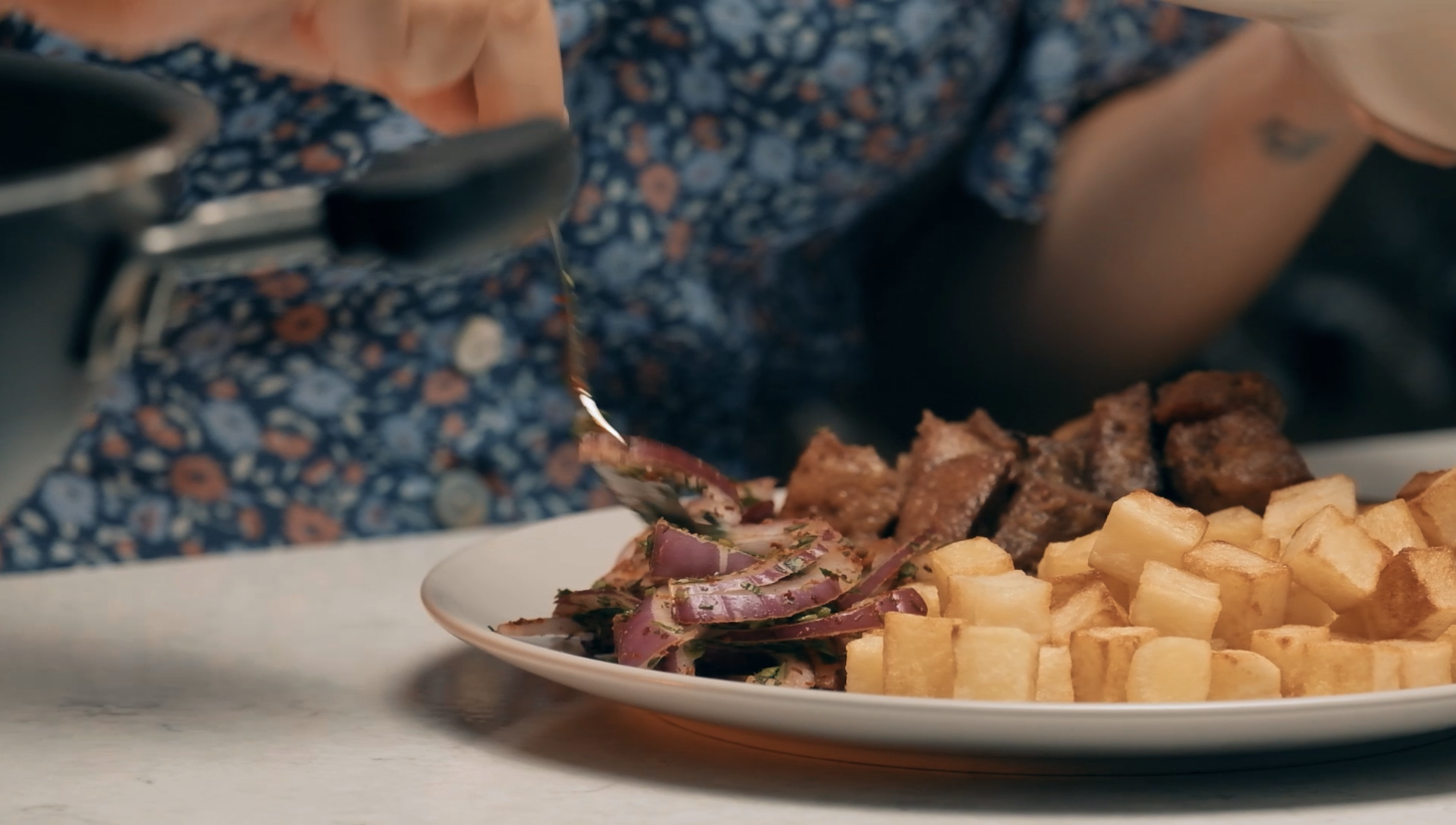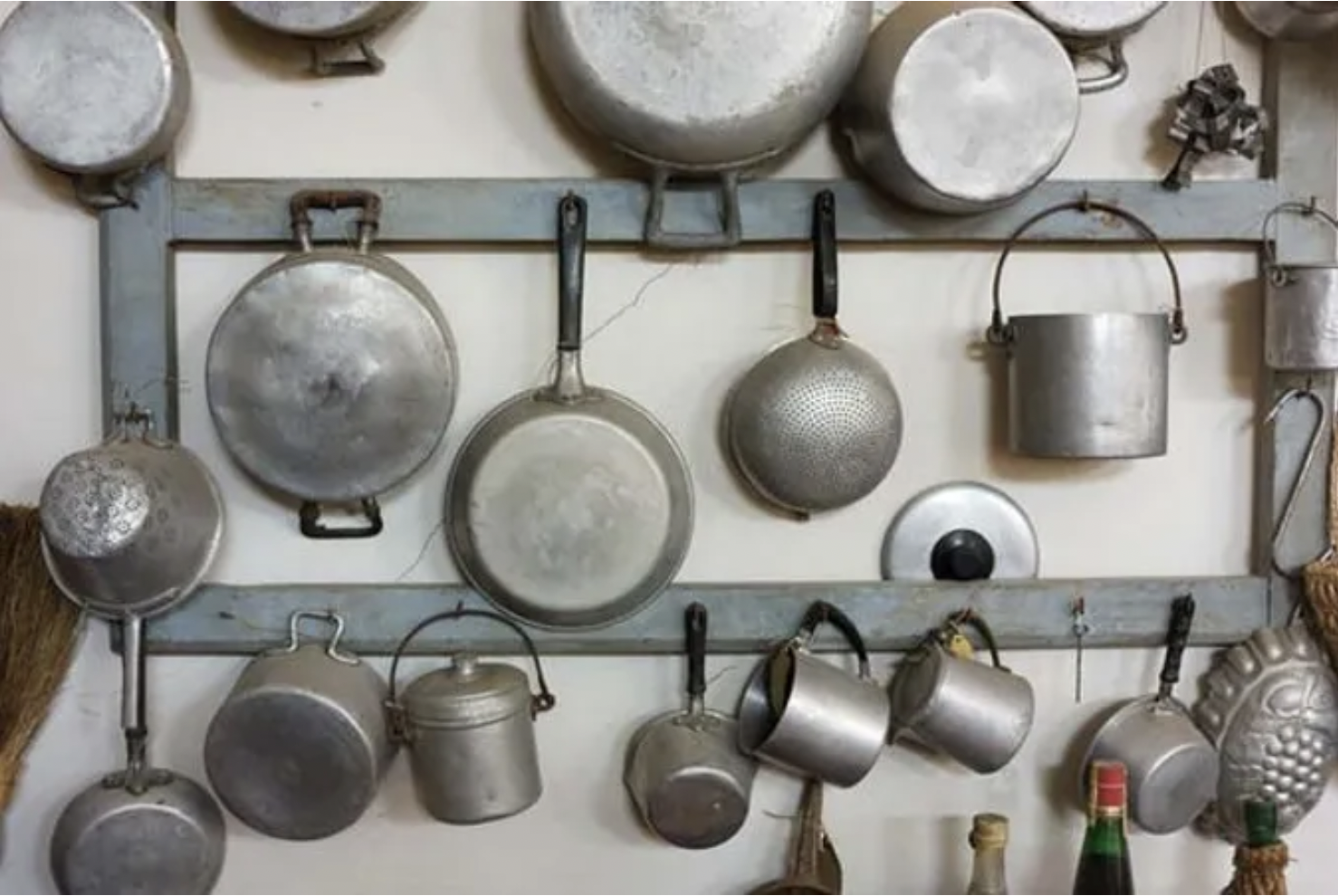Albanian Liver and Istanbul’s Offal Culture
One of the best-known banquet scenes in Homer’s The Odyssey takes place in Odysseus’s palace where his wife Penelope’s suitors lead unabashedly lavish lives at the expense of the absent king. In it, one of the more prominent suitors, Antinoos offers a guest – who else but Odysseus in disguise – a fine piece of meat they’d reserved for supper: not lamb, piglet, or game but “a great goat’s paunch filled with blood and fat” – the same kind of guts that were offered to the twelve Olympians during blood sacrifices as the rich aromas they released when burnt on the altar proved irresistible even to almighty gods.
Offal has indeed been a key component of Istanbul’s culinary culture from time immemorial and amongst the many dishes that are made with perhaps some of the most controversial ingredients in world food history, the Albanian liver stands out as a particularly flavourful mezze.
An Albanian Affair?
First things first: what is Albanian liver? Cypriot Mehmet Kamil Pasha’s Melceü’t-Tabbahin, or A Refuge for Cooks from 1844 includes a recipe, albeit under the heading “pan fried” and not Albanian liver:
Place finely chopped mutton or lamb liver pieces in a sieve and rinse under water, washing away any extra blood. Then coat them in flour and fry in olive oil until dark brown. Serve with sliced onions and chopped parsley.
According to traveller Evliya Çelebi, in the 17th century there were 300 trotter shops that employed 800 people, and 90 head shops employing 500 people within the walls of the city. He noted that most of the clientele of these establishments were men desperately gobbling up soup in order to cure their hangovers.
Barring the introduction of different spices – particularly sumac – and adding fried potatoes to the garnish, the recipe for this delicious dish hasn’t changed for centuries. But why is it called Albanian? One could easily be forgiven for assuming that the dish has been christened as such as it originates from Albania. (And many a traveller have confessed to being rather disappointed after traveling to Albania to enjoy the dish in its natural, authentic setting and finding out that almost none of the restaurants in the country know of the Albanian liver.) And yet, the real story behind the name is much more interesting and reveals a fascinating facet of Istanbul’s culinary culture.
A Class Affair
Albanians arrived in the imperial capital in the 15th century, fleeing the various wars in Rumelia (Ottoman Europe). By imperial decree, most were settled in what came to be known as Arnavutköy (Albanian village), a neighbourhood located on the European shoreline of the Bosporus strait. As immigrants, most of them were only able to find low-paying, manual work. That is why liver, as nutritious as “proper” meat and yet much cheaper and sold piecemeal, became a crucial component of their diet. And, so frequently did they consume the dish that soon it came to be known as the Albanian liver. The aromas that even Homeric gods couldn’t resist, soon permeated the city hooking Istanbulites on this simple, yet mouth-watering dish.
Anthony Bourdain: “Nearly anyone – after a few tries – can grill a fillet mignon or a sirloin steak. But it takes love, and time and respect for one’s ingredients to deal with a pig’s ear or a kidney properly. And the rewards are enormous.”
Unsurprisingly, it wasn’t only Istanbulites but also meyhanes who were involved in this new affaire de cœur. So much so that, according to the historian Philip Mansel, by the 18th century, Albanian liver was one of the most frequently featured mezzes in meyhanes all over the city. But then again, meyhanes, or in fact the city, already had such a long-standing relationship with offal that Albanian liver’s rise to culinary fame was perhaps no surprise at all.
A Greco-Roman Legacy
As chef/writer Pelin Dumanlı notes, public feasts in ancient Greece and the Roman Empire always kicked off with imperial heroes roasting offal as sacrifices to deities. Indeed, De re coquinaria (On the Subject of Cooking), thought to be compiled in the 5th century by Marcus Gavius Apicius includes two offal dishes served at Roman feasts: smoked pig head and a vegetable stew with offal parts and spices.
According to Roman historian Simon Malmberg, some Roman emperors’ weakness for offal took them to extremes. Take Aulus Vitellius, the last of Nero’s three short-lived successors, who reigned for eight months in 69: “The Emperor’s favourite dish was a monstrosity called ‘Shield of Minerva’ – a mixture of pike livers, pheasant and peacock brains, flamingo tongues, and lamprey milt.”
Vedat Milör: “Offal is a real test of gourmandism. It is perhaps the most delicious part of an animal.”
And Byzantines inherited many offal delicacies from the ancient Greeks and Romans including spiced sausages, boiled tripe in vinegar sauce, and braised tongue. The excavations at the Harbour of Theodisius have discovered traces of cutting and chopping on cattle, sheep and goat skulls, revealing that the practice of brain removal for the purposes of consumption was quite common around the 5th century.
In his Tastes of Byzantium: The Cuisine of a Legendary Empire, Andrew Dalby draws attention to how Byzantine dietary authors assiduously catalogued offal: head, bone marrow, lung, heart and especially liver are in general classified as nourishing while brain, because it is “emetic”, should be eaten with either peppers or mustard. Even spleen is listed among edible offal parts but apparently is not favoured by many.
Although Greek, Roman, and Byzantine elite did have a penchant for offal, its high levels of consumption by the masses was largely due to economic factors. As historian Stephanos Tanis and Pelin Dumanlı both point out, meat was a luxury for majority of the Byzantine citizens, and offal, copious in amount and impossible to preserve at the time, provided a cheap alternative and became an indispensable ingredient in ordinary citizens’ and lower classes’ kitchens. The same reasons made offal a very attractive option for Byzantine taverns.
Other than livers you might hear Istanbulites refer to Albanian pavements (cobblestones named so, as it was mostly Albanians who worked in their construction); Albanian chains (albert chains used mostly by Ottomans of Albanian descent); and Albanian stubbornness (a character trait associated with Istanbulites of Albanian origin).
Tanis lists some of the offal dishes that habitués of the taverns frequently enjoyed: ptôchoprodromos (grilled, fried, or boiled intestines); koiliohorda (tripe soup or stew); podokephala (head and trotter soup served with garlic vinegar sauce); and a variety of other parts such as liver, heart, and kidneys cooked in diverse ways.
Empires Change, Attitudes Persist
Offal’s status did not undergo any major change after the conquest of Constantinople by the Ottomans. As historian Marianna Yerasimos notes, there was no slaughterhouse in the Ottoman palace meaning animals were sent elsewhere for slaughtering and “good cuts of the meat were reserved for the Palace, the janissary, and wealthy classes in the city while the rest, such as heads, trotters, livers and other offal parts would be either sold raw or cooked at affordable prices in shops or by street vendors.”
However, this doesn’t mean that the Palace entirely refrained from consuming offal. On the contrary, there were various delicacies enjoyed by the Sultan and his close circle, albeit in lesser amounts. For instance, Stefanos Yerasimos has discovered two records from 15th and 16th centuries of a dish named zerenduli cooked in the Palace’s kitchens for Mehmed the Conqueror in 1469 and for Suleiman the Magnificent’s sons in 1539: “Sheep tripe is stuffed with pre-cooked trotters, onions, coriander, dried apricots, and other spices, and then sewn and boiled in water.” Likewise, imperial kitchen records from the 18th century onwards show trotter soup, tongue pie, trotter pilaf, kidneys, and skewed livers as some of the favourite dishes of palatial circles.
And yet, it was affordability that made offal very popular among the citizens and meyhanes alike. And its popularity meant the Ottoman state took its production and consumption quite seriously. Officially, there were two sets of workers employed by the Palace to work in production: sakatatçılar, who were responsible for taking out the carcass’ organs; and, bağırsakçılar, who were responsible for washing and cleaning intestines. The products would then be sold either at specialised shops – particularly liver shops – or by street vendors, most of whom were, lo and behold, of Albanian descent. Most of the tripe and trotters were sold by specialised soup/stew houses at affordable prices.
According to Merriam-Webster, “offal” is an English original word that arose in late 14th century as a combination of of (the Middle English spelling of “off”) and fall, aptly meaning that which falls off from something else. The Turkish equivalent, sakatat comes from Arabic and also means those that have fallen off from something else.
Perhaps nothing exemplifies the importance of offal’s affordability as the events that unfolded during the inflation and food shortage crisis of the early 19th century. According to historian Kahraman Şakul, no longer able to afford basic food items, women of Istanbul arrived at the mosque Mustafa IV (1807-1808) was in for Friday prayers, carrying pieces of liver on sticks and demanding to be heard: “Even livers costs 25 para (currency at the time). How are we supposed to live like this?”
Offal has remained a key part of Istanbul’s culinary culture for millennia. Today, kokoreç (lamb or goat intestines wrapped around seasoned offal and typically grilled); brain salad; sweetbread; sauteed kidneys; and, of course Albanian liver among others continue to adorn Istanbulites’ and meyhanes’ kitchens, and if history is anything to go by, they will continue to do so for centuries to come.



